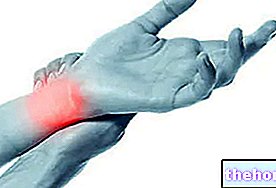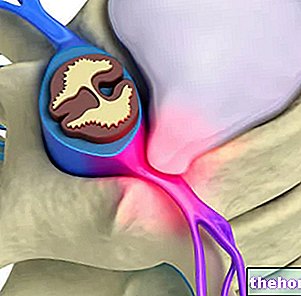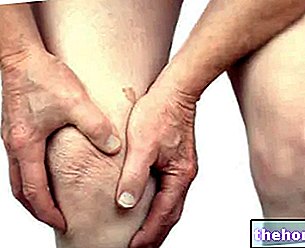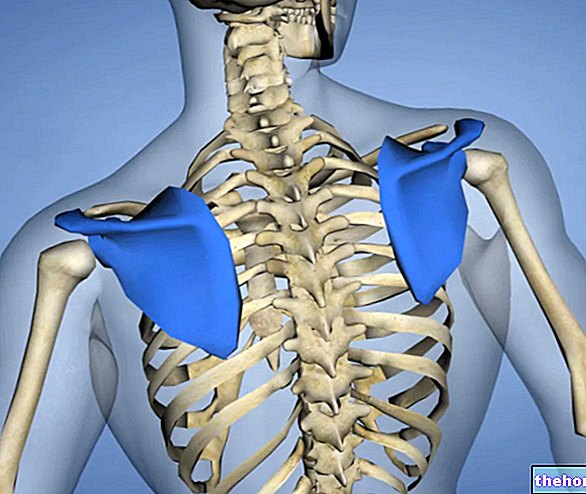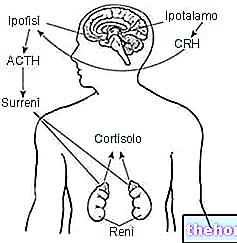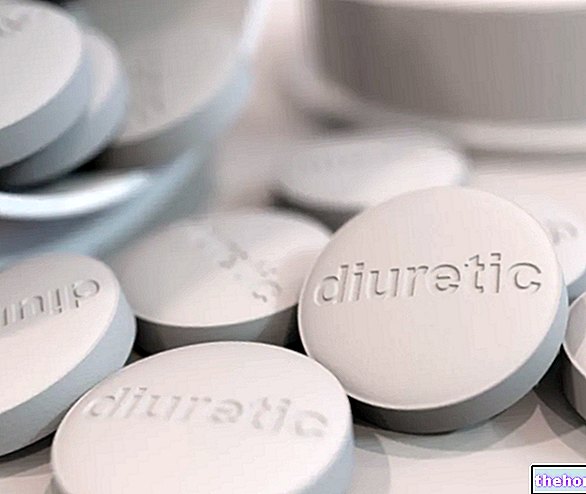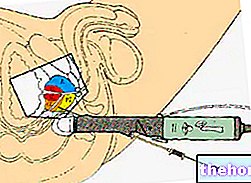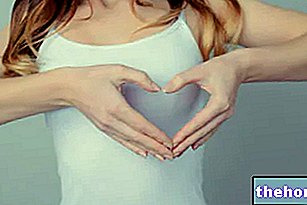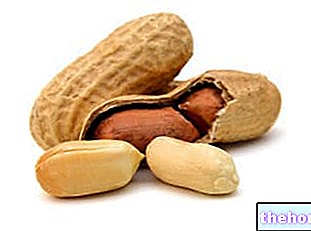Edited by Dr. Giovanni Chetta
Introduction

The X-ray report of July 1995 shows: broad radius scoliosis left convex and right dorsal convex L with culmination in L2, accentuation of dorsal kyphosis, left hemibacin rotated anteriorly, right lower right femoral head of 8mm.
Previously, the subject had used orthotics and corrective gymnastics without reporting any significant improvement. The patient reports that he has always exercised regularly and suffers only from mild musculoskeletal discomfort. The main motivation of the subject is the search for an improvement of the aesthetic aspect.
Materials and methods
The postural analysis and re-education program made use of various integrated "tools" and was carried out in two successive phases:
TIB massage and bodywork
Specific myofascial and joint mobilization technique. The fundamental objective of this manual technique is the normalization of myofascial visco-elasticity, through the elimination of myofascial retractions and muscle contractures, and the restoration of joint mobility and proprioception (Chetta, 2004).
10 sessions were carried out in phase I, the first two in the first week, the III the following week, the IV after two weeks, the V after three weeks, the VI after 1 month, the remaining 1 / month, and five sessions in the Phase II, the first two in the first week, the III the following week, the IV after two weeks, the V after three weeks.
Chiropractic
Specific chiropractic manipulations of the articular hinges were performed during the II phase of the rehabilitation program with the aim of:
- eliminate subluxations and related mechanical, neurological and vascular functional blocks
- eliminate caspulo-ligamentous and myofascial micro-adhesions
- perform a reset of the postural system in order to facilitate the passage and reception of the inputs deriving from the ergonomic tools.
Six sessions were performed, the first 2 weekly, the III after 15 days, the IV after 3 weeks, the V after 1 month and the VI after a further 2 months.
Postural gymnastics TIB
This gymnastics includes specific and personalized exercises which have as main objectives (Chetta, 2008):
- restoration of the physiological ROM of the articular hinges
- restoration of the proprioceptivity of the articular hinges
- increased motor coordination and motor skills
- myofascial re-harmonization (strengthening exercises and specific muscle stretching)
- respiratory re-education.
After 3 assisted sessions, every 3-4 days, the subject continued to carry out the exercises on his own with a frequency of 3 times a week.
Ergonomics
The use of ergonomics had the objective of modifying the two critical supports for posture, namely: plantar support and occlusal support so as to stimulate a natural vertebral and postural repositioning. Ergonomic tools used were:
-
customized ergonomic polythene insoles, introduced at the beginning of the first phase, aimed at restoring the correct helical functionality of the foot, consequently inducing a general postural improvement. fingers) with the addition of specific elevations facilitating pelvic derotation on the transverse and sagittal planes;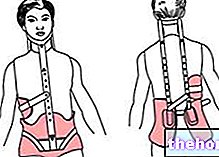
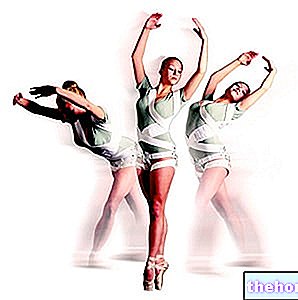
- lower rigid customized occlusal bite, used in phase II during the day (for a minimum of 3 hours) and all night, in order to reposition the jaw correctly (in particular by rebalancing the vertical dimension) and to relax the chewing muscles.
The patient was periodically monitored from a postural (functional and structural) point of view both objectively and instrumentally using the Formetric "4D + system and performing static and dynamic baropodometric exams.
Electronic baropodometry (Diasu ©)
The development of computer systems, together with the increasingly numerous studies on posturology, have allowed the creation of highly accurate and reliable baropodometers (literally "foot pressure gauges").

The baropodometer is a device consisting of a platform with applied sensors connected to a computer system. What the system measures are reactions on the ground, standing and walking. In this way, through a baropodometric examination, various parameters are identified, whose correct interpretation allows to evaluate, with high precision, the general behavior of the subject's tonic postural system with respect to normality indices.

The baropodometric analysis is fundamental in determining the environmental variations capable of guiding, in a controlled manner, the general body center of gravity, both in static and walking. The result of all this is the re-establishment of a stable dynamic balance, with the consequent improvement of the quality of life The concept of ergonomic study , as an indispensable tool for the creation of man-environment interfaces capable of creating the aforementioned conditions of functional equilibrium (Pacini, 2000).
4D + Formetric Spinometry Analysis System © (Diers)
The 4D + Formetric Spinometry © (Diers) analysis system performs a detailed and extensive (without the use of markers) non-invasive three-dimensional optical detection (without X-rays and without any side effect), static and dynamic, of the entire spine and of the pelvis providing precise quantitative data (error less than 0.2 mm) and repeatable with graphical representations.
The 4D + formetric spinometry exam performs a complete morphological survey, volumetric acquisition , through 10,000 measuring points based on the operating principle of triangulation applied to video-raster-stereography. This allows to detect even small morphological variations, eg. following a therapeutic treatment, and to cancel the human error of positioning of the markers and the detection error due to the displacement of the skin during body movements.

The subject is positioned standing 2 meters away from the system which projects, on its rear body surface, halogen light in the form of a special grid with horizontal lines (raster image). Thanks to this optical scan, the formetric system automatically detects the anatomical landmarks (C7 or prominent cervical vertebra, sacrum, lumbar or Michaelis dimples), the midline (line of symmetry) of the spinal column and the rotation of each segment. of the same. The result is the creation of a three-dimensional morphological model of the entire spinal column and the position of the pelvis, which can be viewed in different angles together with various significant parameters.
As mentioned, the operating principle of this system is based on that of the triangulation . Active triangulation techniques make it possible to detect the surface of a certain object by means of a light source, which illuminates it at a certain angle, and a camera, which captures the light reflected by it. Considering a point as an object, the three lines constituted by the straight line joining the light source-camera, the light beam of irradiation light source-object and the reflected light beam object-camera, a triangle derives (from which the name of the technique originates) ). Knowing the direction of irradiation and the camera-light source distance, it is possible to calculate the distance that separates the object (point) of the camera.

The results now available in the form of three-dimensional coordinates (x, y, z) are not suitable for human morphological analysis which aims to obtain clinically relevant parameters that can be related to other examinations, such as, for example, radiographic plates; and this for several reasons:
- the coordinate values depend on the random position of the patient with respect to the image acquisition system;
- the points detected are distributed on the skin surface in a more or less regular way;
- unlike technical objects, the surface of the human body has an uneven and changeable morphology.
Two images of the same subject are not comparable even if it is both in the same position. Therefore, the need arises to represent the morphological peculiarities of the body surface regardless of their random arrangement in space. This is made possible by the use of invariants which can be calculated on the basis of the coordinates while being independent of them. Examples of invariants are the length of a segment, the volume of a body, the angle formed by the edges of a polyhedron and, in the case of bodies with an irregular surface, the curvatures.

If, thanks to the distribution of the surface curvature, points with particular morphology corresponding to a characteristic curvature are identified, they will also be invariant. Examples are i landmarks , points that allow to perform various measurements and bodily comparisons that are invariant, i.e. independent of the position of the subject with respect to the image acquisition system. These anatomical points of reference are therefore of particular importance in video-raster-stereography and are: the VII cervical vertebra (called "prominent"), the right and left lumbar dimples (Michaelis iliac dimples), sacral point (upper apex of the gluteal line) ) and the line of symmetry. There line of symmetry it is also "an" invariant, which in the subject with ideal posture coincides with the median line of the body (which divides it, along the median sagittal plane, into 2 equal right and left hemisomes), is determined by joining the points that in each section transverse body exhibit the greatest latero-lateral symmetry. The line of symmetry can be considered coincident with the line of the spinous processes.
Given the correlation existing between the surface landmarks and the underlying skeletal structure, it is thus possible to reconstruct a three-dimensional model with great precision as well as derive reliable evaluation parameters. A winning feature of rasterstereography compared to alternative procedures is the possibility of reconstructing the real bone morphology of the spine and automatically defining a spatial relationship between the morphology of the posterior trunk and the bone skeleton. This feature opens up important prospects for use in the clinical field, as the rastertereography method can be used as an alternative to radiographic investigations. The evaluation of the bone morphology of the spine passes through the following phases:
- automatic localization of the spinous process line by calculating the symmetry line;
- measurement of superficial rotation with respect to the line of spinous processes as a measure of vertebral rotation;
- localization of the center of the vertebra by evaluating its anatomical dimensions.
A few seconds after the measurement, the examiner will have the following information available:
- sagittal profile of the dorsal surface and the rachis
- lateral deviation of the spine (in the frontal plane)
- superficial rotation and vertebral rotation (in the transverse plane)
- overall three-dimensional view of the spine.
The variations in results that are found by carrying out multiple radiographic (radiographs) and optical examinations on the same subject are significant (poor repeatability of the results); this is due to physiological changes in postural (breathing, swallowing, emotional state, etc.) and operational changes (upper limbs position, feet, etc.). The 4D + formetric technology overcomes this problem as it detects 12 images in 6 seconds (approx. The time of a respiratory cycle), calculating and depicting the average value ( Averaging ). Furthermore, thanks to the reconstruction and consecutive three-dimensional evaluation, the scan is performed only on the posterior surface of the body; the subject therefore does not have to reposition himself for the analysis on the other sides (front and profiles). All this minimizes the effect of postural variations during the examination, considerably increasing the precision and repeatability (in other words the reliability) of the results obtained . The whole procedure takes a few seconds.
The "analysis of body movements ( motionanalyzer ) is crucial in the field of clinical diagnostics and biomechanics. Up to now the measurements had been limited to the analysis of the results detected by markers positioned on the patient's skin (BAK, GaitAnalisys). With the 4D + formetric system it is possible to analyze the movements of the whole body and of the skeletal system (spine and pelvis) through the volumetric acquisition of 10,000 measurement points, with a shooting rate of up to 24 images per second.
These postural examinations in standing position generally last from 30 to 60 seconds, a time that allows to detect the coordination skills and muscular deficits of the subject. In addition to the representation of the motor models, the morphological and volumetric variations (in graphical and numerical form) detected are displayed precisely within the chosen time frame. Typical applications are the examination of walking on a treadmill or stepper.
The analysis of the surface curvatures on the sagittal plane also allows the identification of functional blocks and dysfunctions of the spinal segments , due for example to contractures, muscular imbalances or trophic alterations of the connective tissue, not detectable by traditional radiodiagnostic techniques. This examination also allows us to formulate diagnostic suspicions (to be confirmed and quantified by radiological examination) relating to vertebral slips or spondylolisthesis (Diers et al, 2010).
In general, the checks were performed more frequently at the beginning of the treatment and after each modification (eg insertion of the forefoot lift, orthotics and / or splint changes) and then gradually thinning out over time. This allowed both the monitoring of the correct course of the rehabilitation and timely changes in the event of negative trends.
In particular, the occlusal checks of the bite were first carried out every seven days in order to guarantee always correct support of the upper arch to the bite, given the continuous movement of the mandibular induced by the gradual relaxation of the muscles that support the mandible itself. the first three months the checks were performed every fifteen days and only after a further 3 months the checks were carried out both in a lying and standing position with the insoles, verifying their synergy.
Other articles on "Clinical Case of Scoliosis and Therapeutic Protocol"
- Idiopathic Scoliosis - Myths to Dispel
- Scoliosis - Causes and Consequences
- Scoliosis Diagnosis
- Prognosis of scoliosis
- Treatment of scoliosis
- Extra-Cellular Matrix - Structure and Functions
- Connective tissue and Connective fascia
- Connective Band - Features and Functions
- Posture and tensegrity
- Man's motion and the importance of breech support
- Importance of correct breech and occlusal supports
- Treatment Results Clinical Case Scoliosis
- Scoliosis as a natural attitude - Bibliography



